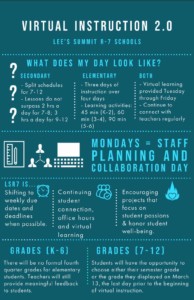Three Connectivity Trends to Watch in 2017

By John Harrington
Educators know that students need a sound foundation to succeed. For many districts, the E-rate program is part of the proverbial cement that lays the foundation. Implemented by the FCC in 1997, the E-rate program provides discounted telecommunications and internet access for schools and libraries.
Last year, the E-rate program helped connect 53.6 million students with high-speed data lines to more than 120,000 school buildings and over 4,000 library systems nationwide. The program serves communities in virtually every zip code in the United States.
Since the Telecommunications Act was passed in 1996, leaders have made significant strides to improve the E-rate program. Still, there is work to be done. It’s estimated by the Funds For Learning 2016 E-rate Trends Report that, over the next three years, schools and libraries expect their need for internet bandwidth to increase by more than 50 percent.
This immense number means there are big changes on the horizon, and 2017 could shape up to be an influential year for connectivity and learning in schools and classrooms across the U.S. Here are the three major trends expected to play a role in this monumental year:
1. Closing the Homework Gap
According to Pew Research, a third of all households in America lack broadband internet access and nearly half of those without internet do so not out of choice, but simply because they can’t afford it.
As it stands, there is a regulatory wall that prohibits nearly a million low-income inhabitants that live near a school or library from tapping into the internet at an E-rate site. Currently, the FCC is reviewing a petition that could tear down this wall that heavily divides school communities. If passed, impressive changes could come for schools and neighborhoods.
Schools have also been rolling out initiatives allowing students to visit after-school sites where school buses that have Wi-Fi signals installed are parked. This allows students to have a place where they can log in and complete assignments. Some corporate companies are aiding in this initiative and are promising to distribute free mobile devices and connectivity to students who normally go without.
2. Continued Investment in Infrastructure
Having a connected and informed citizenry is important in the new American economy. As a new administration takes office, a focus on investment in school infrastructure and technology would go a long way in getting every American online and up-to-speed.
As parents, educators and leaders, it’s our job to make sure students have access to the internet. Investment in telecommunications infrastructure yields greater returns in our workforce, schools and hospitals.
At the local level, a school’s investment in its technology infrastructure should be priority number one. Rolling out programs such as 1:1 devices and district-wide Wi-Fi ensures that students get access to the tools they need to succeed. This will immediately impact the daily lives of students and teachers.
3. Technology to Impact Deeper Learning Practices
According to CoSN’s Horizon Report, there is a growing emphasis in K-12 education on deeper learning approaches, which essentially engages students in critical thinking, problem-solving, collaboration and self-directed learning.
Technology has a direct role in making sure students are able to grasp this new knowledge and gain skills that will help them impact the world around them. As technology has become commonplace in the classroom, educators are leveraging tools that connect the curriculum with these real-life applications. This means students are mastering deeper learning practices to become the leaders of tomorrow.
All in all, access to the internet shouldn’t be considered a luxury, any more than access to electricity or clean water is. Internet connectivity is an essential element in today’s society. As 2017 nears, it will be interesting to see how these situations and initiatives shake out.
It’s important that we keep the most important person in mind when making these decisions: the student. They have a lot more to gain than ever before.
For more, see:
- Boosting Access to the Benefits of Blended Learning
- Bridging the Digital Divide: Strategies to Ensure Student Access to Technology at Home
- Companies Commited to Community Learning Resources
John Harrington is the CEO of Funds For Learning. Follow them on Twitter: @FFL
Stay in-the-know with all things EdTech and innovations in learning by signing up to receive the weekly Smart Update.





0 Comments
Leave a Comment
Your email address will not be published. All fields are required.